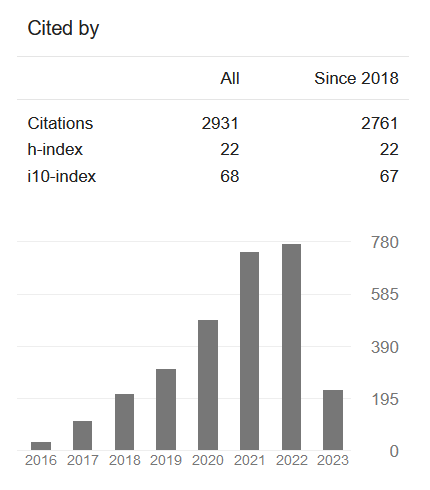Atomic Emission Spectroelectrochemistryas A Sensitive Technique for Trace and Ultra-Trace Determination of Metal Species( Vol-3,Issue-2,February 2017 ) |
|
Author(s): Mohammad Mahdi Doroodmand, FatemehGhasemi |
|
Keywords: |
|
|
Atomic Emission, Spectroelectrochemistry, Alkali Metal, Earth Metal. |
|
Abstract: |
|
|
A novel and sensitive detection system is introduced based on atomic emission spectroelectrochemistry (AESE) inside flame for rapid determination of alkali and some alkaline earth metal ions in the tested samples of rain and drinking water. In this design, the triangular-shaped (inverted Y) three-electrode system consists of two stainless steel rods as the working and counter electrodes, and a brass rod as the pseudo-reference electrode inside the H2-air flame. The inter-electrode distance was set to 2.0 mm using two micrometers, connected to the counter and reference electrodes. The atomic emission of metal species such as alkali and alkaline earth ions was selected as the detection system during applying a fixed DC potential to the electrode system. In this system, the analyte was introduced into the flame as the electrolyte via formation of aerosols using a sonicator through the flow of N2 as a carrier gas. The mixture of H2 and air was introduced into the flame by a capillary hole along the working electrode. To analyze each metal ion, parameters such as type and quantity of supporting electrolyte, kind of electrodes, inter-electrode distance, applied potential, and the flow rates of H2, air, N2-were optimized using the one-at-a-time method. According to the figures of merit under the optimized condition, this system has linear dynamic ranges of 0.3-8.0, 0.26-9.6, 0.65-8.0, 64.0-192.0, 80.0-400.0, and 160.0-800.0 µg mL-1 for Li+, Na+, K+, Cs+, Ca2+, and Ba2+, respectively. Regarding 90% of maximum response (t90), the response time was estimated to be 7.0 s. The reliability of the sensor was also evaluated via determination of sodium and potassium in different wastewater samples. Compared to the flame photometry, no significant interfering effect was observed during spiking at least 200-fold excess of some foreign species such as alkali and alkaline earth metal ions to their standard solutions. An appropriate correlation was evaluated during the comparison between the results of this method and those estimated using inductively coupled plasma revealing the reliability and acceptance of this process. The validity of this method has also been evaluated via estimation of the recovery percentages. Compared to the atomic absorption/emission flame spectrometric techniques, the significant advantages of this AESE system include: I) more sensitive emission during applying the electrical potential in a cool flame such as H2-air; II) more improved detection limit and wider linear dynamic range, and III) the cheapness of this method. |
|
Cite This Article: |
|
| Show All (MLA | APA | Chicago | Harvard | IEEE | Bibtex) | |
Share: |
|

 DOI:
DOI: 



























